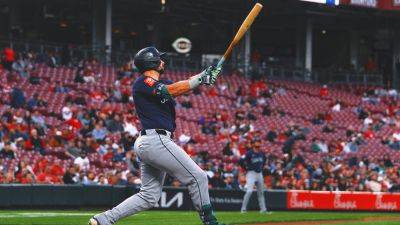Are torpedo bats legal? How they work, MLB facts to know - ESPN
The opening weekend of the 2025 MLB season was taken over by a surprise star — torpedo bats.
The bowling pin-shaped bats became the talk of the sport after the Yankees' home run onslaught on the first Saturday of the season put it in the spotlight and the buzz hasn't slowed since.
What exactly is a torpedo bat? How does it help hitters? And how is it legal? Let's dig in.
Read: An MIT-educated professor, the Yankees and the bat that could be changing baseball
The idea of the torpedo bat is to take a size format — say, 34 inches and 32 ounces — and distribute the wood in a different geometric shape than the traditional form to ensure the fattest part of the bat is located where the player makes the most contact. Standard bats taper toward an end cap that is as thick diametrically as the sweet spot of the barrel. The torpedo bat moves some of the mass on the end of the bat about 6 to 7 inches lower, giving it a bowling-pin shape, with a much thinner end.
The benefits for those who like swinging with it — and not everyone who has swung it likes it — are two-fold. Both are rooted in logic and physics. The first is that distributing more mass to the area of most frequent contact aligns with players' swing patterns and provides greater impact when bat strikes ball. Players are perpetually seeking ways to barrel more balls, and while swings that connect on the end of the bat and toward the handle probably will have worse performance than with a traditional bat, that's a tradeoff they're willing to make for the additional slug. And as hitters know, slug is what pays.
The second benefit, in theory, is increased bat speed. Imagine a sledgehammer and a broomstick that both weigh 32 ounces. The sledgehammer's weight is almost all at








